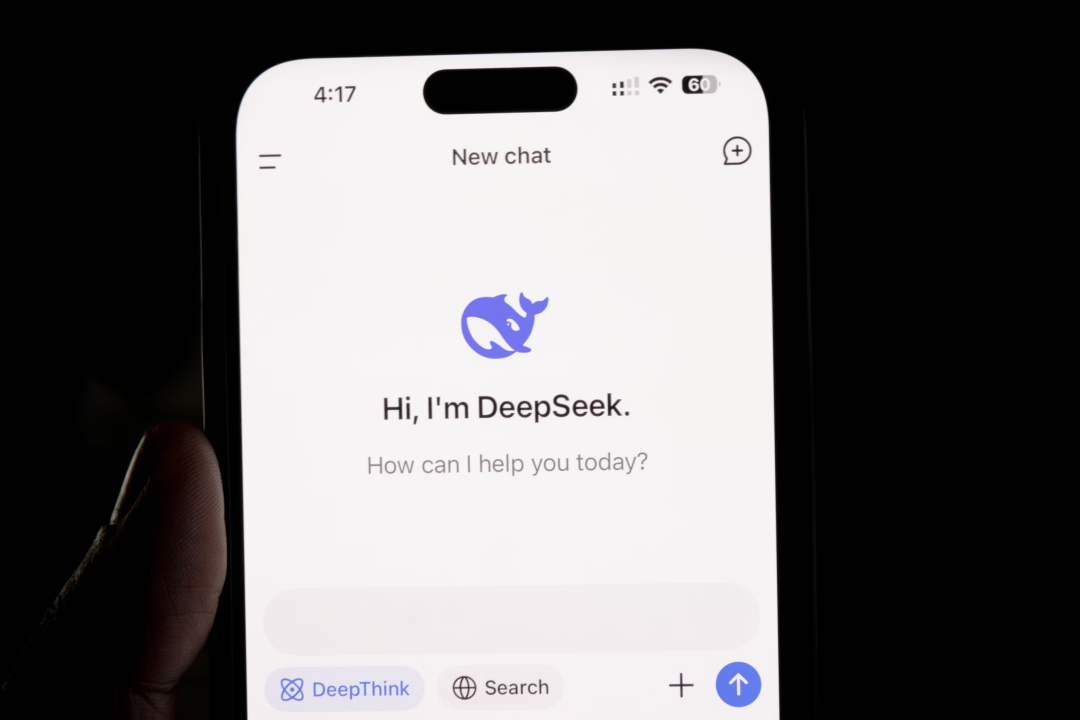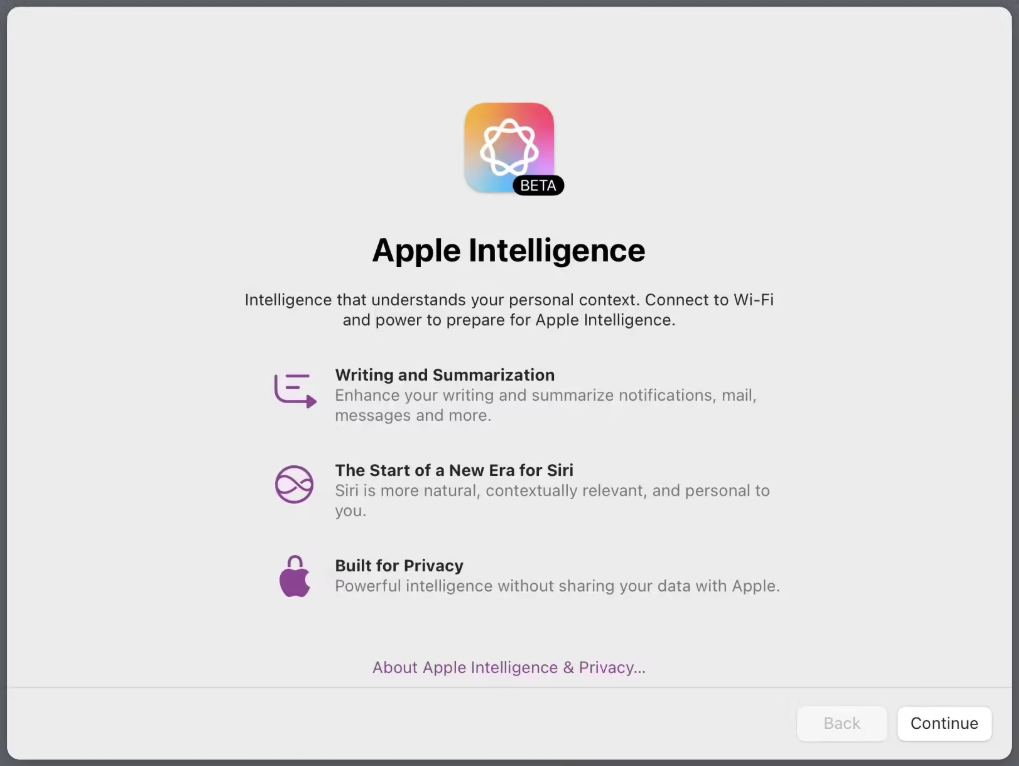Alibaba's Face Meets Apple's Content: A Strategic Union
![]() 02/13 2025
02/13 2025
![]() 452
452
Written by | Wu Kunyan
Edited by | Wu Xianzhi
When major events unfold, Alibaba often seeks not tranquility, but the presence of Jack Ma.
Late on February 11, news broke that Apple had "teamed up" with Alibaba to develop localized AI features for Chinese iPhone users. Earlier, Jack Ma's appearance at Alibaba's Hangzhou campus added credibility to the rumor—the area he "inspected" was the C zone of Alibaba's Xixi campus, home to AI-to-consumer businesses like Quark.
Following Apple CEO Tim Cook's visit to China last year, the industry buzzed about which AI partner Apple would choose. Considering data privacy and localization, it was agreed that Cook would only "turn to" a select few vendors capable of providing full AI+cloud services, with Alibaba being one of them.
While the deal is still pending, the market has responded vigorously, with Alibaba's (NYSE: BABA) share price fluctuating significantly over the past two days.
This union of two "disappointed middle-aged giants" is noteworthy. Apple, no longer the hardware innovation leader, saw shipments in China plummet 25% in the fourth quarter of last year. Meanwhile, Alibaba's e-commerce market share has eroded, and its AI transformation has gained little public attention due to its fluctuating focus between B and C.
Regardless of whether Apple Intelligence becomes a "lifesaver" for Apple's sales in China, a successful collaboration would signify that Alibaba's strategic shift to a "user-first, AI-driven" approach has finally borne fruit.
Securing the Second "Boat Ticket"?
Good things come to those who wait. Since Apple began screening Chinese AI partners over a year ago, only rumors have circulated.
For Apple, struggling with declining sales in Greater China, finalizing a partnership with a domestic AI vendor and accelerating AI implementation is crucial. TikTok aside, Tencent's AI progress is relatively slow. As for Baidu, which Cook intended to collaborate with last year, reports of technological and privacy disagreements emerged.
Alibaba, which had been in contact, seemed to be Apple's only choice until DeepSeek emerged recently.
DeepSeek's "blossoming outside the wall but fragrant inside" principle was again validated. With overseas media and KOLs promoting it, domestic users quickly embraced DeepSeek as the cutting edge of AI technology, and its user base grew rapidly.

However, this alone was not enough for Apple to "turn to" DeepSeek. Apple's contact and evaluation with domestic AI firms predated DeepSeek's "viral" success. Additionally, as one of the few options, Alibaba excels over DeepSeek in servicing major clients. Finally, compliance, a core implementation element, requires a deeply familiar domestic risk control system.
In terms of model capabilities, Alibaba's Qwen2.5-Max, released during the Spring Festival, competed with DeepSeek V3 across various benchmarks. Moreover, DeepSeek's training of multimodal capabilities like graphics and video is ongoing, making it challenging to deploy in smartphone scenarios emphasizing multimodal interaction.
More importantly, for AI service companies, the base model serves as a face, mainly for benchmarking and ranking. Apple seeks usable products and supporting service outputs.
In terms of self-service capabilities, DeepSeek's team of around 100 and lack of cloud service capabilities make it difficult to ensure localized adaptation of Apple's AI and meet massive user demands concurrently. In contrast, Alibaba has supported numerous large-scale events like the Paris Olympics and Spring Festival Gala over the past year, likely a significant factor in Apple's decision.
According to QuestMobile data, as of the second quarter of 2023, there were 250 million iPhone users in China. Recalling the internet's fun with Siri when it launched years ago, it's easy to imagine the Chinese version of Apple Intelligence as a high-concurrency scenario with hundreds of millions of users—precisely Alibaba's "specialty" stemming from its e-commerce background.
At the Paris Olympics, Alibaba Cloud's technical support made cloud computing surpass satellites for the first time to become the mainstream broadcasting method, with over two-thirds of signals distributed globally via Alibaba Cloud. During last year's Double 11, Alibaba Cloud supported Tmall Double 11 with over 1 million CPU cores, setting a new record for elastic scheduling resources.
After its rocky collaboration with Baidu last year, Apple reached out to domestic leaders like ByteDance, Tencent, and Alibaba. Considering this timeline, perhaps many of the large-scale events supported by Alibaba Cloud in recent months were "stress tests" for Cook, the "interviewer."
When cloud computing was ascendant, Alibaba, withstanding the traffic surge of Double 11, demonstrated cloud computing's potential to the market. The public cloud business model was established, securing the first public cloud "boat ticket."
Now, as cloud computing becomes the primary entry point for AI applications, Alibaba's "boat ticket" for the next era seems to hinge on its ability to handle high-concurrency scenarios.
Uncertain Hype
A subtle clue indicates that reviewing Alibaba's earlier AI strategic layout, its collaboration with Apple seems foretold.
Earlier this year, the UALink Alliance, an AI server chip interconnect organization aiming to break NVIDIA's monopoly, announced its latest board of directors, with Alibaba Cloud selected as the only Chinese company. This means it has achieved a certain degree of ecological synergy with Apple, a long-standing director.
More notable changes occurred internally. Initially, Tongyi's to-C applications, packaged with Alibaba's to-B services, were isolated following the spin-off of Alibaba Cloud and its merger into Alibaba's Intelligent Information Business Group.
Judging by the current Apple Intelligence product form, its third-party AI cooperation mode is cloud-based invocation rather than end-side deployment. Tongyi applications derive no benefits from this collaboration. Importantly, C-end users care only about services—good AI applications can be cross-platform, representing Alibaba and Apple's bargaining power.

Take WeChat, China's largest super App, which has negotiated with Apple over issues like public account tipping and mini-programs due to the "Apple tax." Within Apple's closed ecosystem, even the App Store, almost solely for distribution, is like this. Imagine model service providers hidden under Apple Intelligence services?
To some extent, Apple's core demand for Chinese AI partners is to serve as the "Cloud Guizhou" of the AI era.
In contrast, the cooperation service providers, whether earlier rumored Baidu or today's Alibaba, face a buyer's market. Having Apple on the customer LOGO wall is a golden signboard, but the cost is hiding their models under Apple Intelligence, preventing them from gaining much-needed traffic and exposing them to competition from mature vendors like Baidu and Tencent.
As mentioned, the core reason for Baidu and Apple's fallout was the issue of user data usage and ownership within Apple's closed system—Baidu couldn't use iOS user data for model training. Interestingly, Alibaba's comprehensive acceleration of AI to-C application development was almost "synchronized" with this incident.
Furthermore, after reorganizing its to-C business, Alibaba's collaboration with Apple raises new questions about its path.
Firstly, whether Tongyi applications and Quark, representing Alibaba's AI landing in the C-end market, will follow Doubao and Kimi's path by quickly gaining popularity through paid traffic. In Alibaba's "every man for himself" structure, different applications have resource tilts. We learned that Alibaba's Intelligent Information Business Group has limited budget resources. For now, Quark and Tongyi target mobile and PC scenarios, respectively, with no immediate competition concerns.
Since Alibaba is committed to to-C, another point not to overlook is the ModelScope developer community, long "partnered" with Tongyi.
Some believe that AI applications' atomized and lightweight nature bridge the traditional to-C and to-B gap. ModelScope has already amassed a large community of independent developers and lightweight applications. If fully opened to C-end users and entering the mobile space, it could potentially be the next application marketplace in the large model era.
"Taking Sides" Moment
DeepSeek's popularity has been seen as a new "GPT moment," with AI frontier investment and financing heating up recently.
Whether Masayoshi Son taking charge of OpenAI or Elon Musk "stealing" from Ultraman, startup investment and financing are essentially about drawing lines. Huanfang, yet to accept investment, has an external valuation fluctuating between $1 billion and $150 billion. A similar situation may emerge in different markets after Alibaba and Apple's collaboration.
First to face the "taking sides" demand is Alibaba. In the AI era, the cloud computing business model relying on computing power hasn't fundamentally changed. Both major customers like Apple and lightweight applications by small and medium-sized developers use the cloud as the primary entry point. Alibaba's acquisition of Apple, a major customer, is a landmark for large model commercialization, potentially sparking controversy over a new growth path.
Years ago, when the cloud computing industry's growth slowed, there was debate within the industry about the path between key accounts (KAs) and small and medium-sized enterprises (SMEs), leading to major cloud vendors continuously reducing profit margin weights to compete for project-based orders under share competition. At that time, Alibaba overhauled its sales organization to adapt to KA customer acquisition and introduced Cai Yinghua, the former President of Huawei's Enterprise Business China region, but lost share due to factors like the information technology and innovation environment and the rise of operator clouds.
Alibaba's fiscal year 2025 semi-annual report shows that as of September 30, 2024, Alibaba Cloud Intelligence Group's revenue was 29.61 billion yuan, a 7% year-on-year increase. With continuous price reduction of model invocations, major customers are likely to become crucial for the management's claim that "the cloud business's growth rate will return to double digits in the second half of 2024."
Additionally, the decision to "take sides" is also before highly competitive smartphone vendors.
From a user's perspective, model capabilities accessed via the cloud aren't crucial in daily use. What they need more are sufficiently intelligent end-side capabilities. Currently, domestic smartphones' image search and AI operations are still basic interactions and applications.
Recently, Honor, vivo, OPPO, and Huawei have announced that their phone intelligent bodies will access DeepSeek. Without Apple's involvement, perhaps each company would maintain a similar pace, focusing on self-developed models and choosing a date to compete again after strengthening their capabilities by "gilding" DeepSeek. However, after Apple teamed up with Alibaba's Tongyi, the situation may change—Alibaba's e-commerce business's accumulated data assets are biased towards user behavior analysis, precisely what smartphone vendors' end-side AI lacks most.
Enterprises need to "take sides," but technology does not. Tongyi, born out of the DAMO Academy, has a tech-savvy aura from birth. We needn't worry about its strategic resolve; the Qwen series, long ranking top in various benchmarks, is sufficient proof. However, the question mark is whether Alibaba can concentrate resources to develop new AI businesses and products after its collaboration with Apple.
Perhaps this is the main reason Jack Ma appeared at the Xixi campus.





